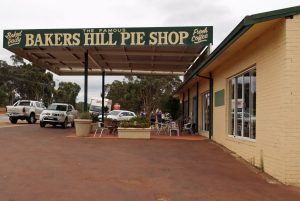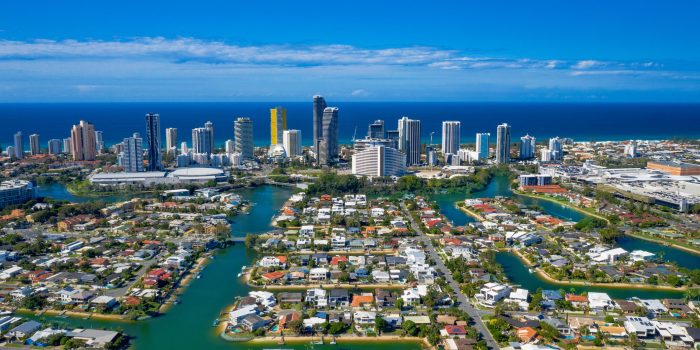A couple who signed an almost blank home loan application that they left to their broker to complete have been granted – 16 years after the advance was made and 10 years after the date they stopped all payments – a court reprieve on what they must repay on the unaffordable loan.
Chris and Anita Shannon provided no information about their financial circumstances in the application and it was Yes Home Loans who – unknown to them – falsified a mortgage insurance application with fabricated income and expense details.

Contrary to their own guidelines, they required no information about customers’ financial circumstances for loans $500,000 of less.
The borrowers faced early difficulties in meeting instalments on the $452k loan made in June 2006 and had to be bailed out by Chris’s mother from time to time.
In 2010, the GE loan book was acquired by Pepper Home Loans at a 26% discount.
It didn’t take long for Pepper to initiate recovery proceedings in February 2012 alleging default notwithstanding – so the Shannons alleged – the fraudulent circumstances of the 2006 loan ought to have been apparent to them as should Yes’ failure to provide GE with a copy of the loan application.
The Shannons represented themselves in those proceedings until just before the W.A. Supreme Court 2017 trial that ruled in favour of the lenders, allowing repossession of their property at Bakers Hill, about 70 km east of Perth.
The borrowers appealed.
Not only had Yes’ conduct been fraudulent and dishonest, they contended that the loan approval processes adopted by GE – as “lender of record” – had enabled the fraud to go undetected.
They successfully persuaded the appeal court that the loan agreement and mortgage were each “unjust” within the meaning of, s 76 of the National Credit Code and should be “reopened”.
After a further hearing in 2021, the matter came back before the appeal court in August 2022 for adjudication of the relief that should be applied as a result of the “reopening”.
National Credit Code s77 allows among other things, the court to revise the terms of a loan and relieve the debtor from payment of any amount in excess of what it considers in all the circumstances, ought to be reasonably payable.
The borrower’s ask was for the loan agreement and the mortgage to be set aside and that $650k in consequential “losses” they claimed to have incurred be credited against the principal, leaving a net balance in their favour – after time/value adjustments – of $300,000.
GE argued on the other hand that any relief would be “an unwarranted benefit” given that the couple had lived in the residence for more than 15 years and had not made any payment under the loan for more than ten.
In essence, the Shannons wanted to retain the property free of debt to the lender; whereas the lender sought judgement for the total $2.2 million current debt recorded in its books and an order for possession of the property.
Chief Justice Peter Quinlan and Justice Paul Tottle observed that the National Credit Code – while neither penal nor disciplinary – is intended to ensure consumers are protected from the consequences flowing from unjust transactions entered by them.
With that in mind, they concluded that – because they would not have proceeded with the loan had the falsification not occurred – the Shannons should be restored to their pre-transaction position.
They ordered the loan terms be varied so that the original principal of $452k accrued simple interest only at the RBA cash rate, which loan would only be repayable on sale of the Baker’s Hill property which they ordered must occur before March 2023.
The court further ordered that the mortgage should be set aside and that there be no recourse against the borrowers personally.
The Shannons will be entitled to receive as a priority, $460k for their “losses” – not the $650k claimed – from the proceeds of sale, with the lenders being paid from the balance.
The borrowers also claimed they sustained psychological injury as a result of the trauma they endured from having to prove the fraud against a virulent opposition; and that their business had been ruined by being deprived of the time and energy to devote to it.
Their honours thought though that the powers granted by s 77 did not extend to that of awarding damages either in respect of personal injuries or business losses.
Although s77 also allows a court to have regard to the conduct of the parties since the loan was entered into, it did not rule on the borrowers’ allegations as to the abhorrence of the lenders’ recovery proceedings – given that the falsification was “obvious” – because the events were not pleaded and would not in any case have allowed any greater relief than what they proposed to allow.
Justice John Vaughan in a separate judgment proposed slightly different relief designed though to meet the same objective of restoring the borrowers to their pre-transaction position.
He would not have ordered the mortgage be set aside or that the property be sold. Rather he would have allowed a 3.5 year interest moratorium with it to start from December 2009 as simple interest at the RBA cash rate over an extended 40 year term and would have required the borrowers to resume monthly instalments as from February 2023.
The different well thought out approaches establish excellent guides for other courts to follow in future cases.





